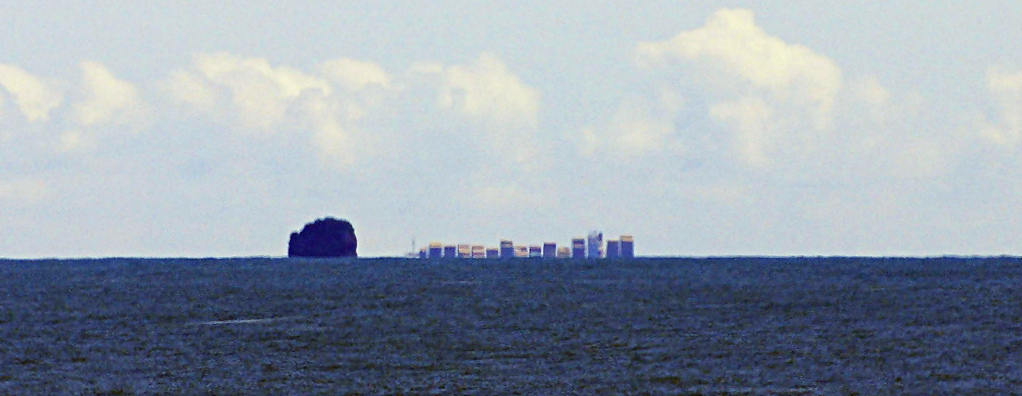We promised last time to apply our understanding of the old phrase “hull down” to modern circumstances. The issue arises when making offshore passages. Clearly, single-handers are in violation of Rule 5 of the Colregs because they cannot maintain a watch at all times. But as the majority of long distance cruisers sail with only two crew, when one is asleep and the other is attending to repairs, navigation, or the last chapter of that pot boiler, a proper lookout is not being kept. According to Tradewinds’ respected instructor of offshore passagemaking, Craig Walker, violating Rule 5 “means that if there were a collision, the vessel and skipper not having a look-out would bear at least a portion of the liability for the accident. That said, we need to use our best judgment regarding reasonable risk.” Like the mariners of old, we must determine how long it will take for that ship just appearing on the horizon to come close.

Although container ships generally cruise at a speed in the high teens or low twenties, it is possible for the largest to attain speeds up to thirty knots. So if a sailboat and such a ship are heading directly towards one another, the closing speed could approach 38 knots. The ship’s bridge will be 125 or more feet high, and doing the math from our last issue we can see that that height together with our height of eye will mean she will be visible over the horizon at about 16 miles. At 38 knots our closest point of approach will occur in about 28 minutes. A sport fishing vessel with a height of only 30 feet may be steaming at 10-12 knots, yielding a potential closing speed with us of 20 knots. We will be able to see her at about 10 miles, so a collision could occur in the half-hour range. (Similar considerations along with some others apply to radar as it is also limited by the curvature of the earth. It should be a supplement, not substitute, for the human eye.)

The same calculations affect being seen as well as seeing, giving the advantage to a tri-color light at the masthead which adds an extra six or seven miles’ radius of visibility as opposed to deck lights.
Of course in all of the above we are assuming smooth seas, perfect visibility, and excellent eyesight, so it pays to cut these times at least by half. Stay alert out there.
